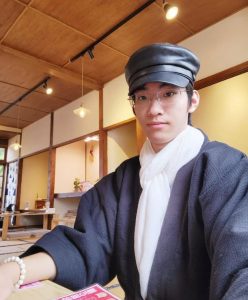Julian Tsai, a 12th grade student with Springs’ Journey Homeschool High School, daily practices Kendo, a Japanese martial art that uses bamboo swords and protective armor, and believes the skills he has learned with it help him in everyday life. In February, he competed in the Mori Hai Tournament in Fountain Valley and earned third place. When he’s not practicing Kendo he’s playing the shamisen, a three-stringed Japanese instrument that can be a challenge to play.
Julian describes himself as “pure Taiwanese who really likes the Japanese culture.” He was introduced to Kendo while watching the Japanese television series Naoki Hanzawa, in which the lead character applies “the ideas and spirit of Kendo” in his work. Kendo, he explained, is a budo (way of battle) “that focuses on your mind rather than your movements.” While movements are important in martial arts, “your mindset is what really determines your outcome in Kendo. If you go into a fight with a weak mindset and not concentrating, then you are 100% going to lose no matter how good you may be with the sword.”
His favorite aspect of Kendo, he said, is zanshin, “the mindset that your opponent is not dead after you strike him down. So instead of relaxing yourself when you hit your opponent, you remain vigilant and prepare for the next possible attack.” This is important in real life, he asserted. You may complete your homework and relax, he said, but then you realize “you may have missed required materials in the homework and the result is that you will get a bad grade. But because you relaxed yourself, it will be hard to go back to the assignment and you most likely wouldn’t have the mindset that you want to redo the homework anyway.”
Kendo has helped him remain calm in stressful situations, he said, so that he may “actively search for solutions. Then, if I am struck down (metaphorically, I mean meet undesirable situations), I will get back up and immediately strike back.” Julian takes community college classes and wants to earn an AA degree. He’s been pleased to be part of the Journey program, he said, because he likes his teachers, and “it gives me so much freedom to explore what I want to do.”
His other interests include playing the shamisen: “It’s deemed one of the hardest instruments in the world to play because of the lack of frets and the lack of melodic range because there are only three strings.” He’s been playing the shamisen for the past few years because he “loves” its sound.
 |
 |



